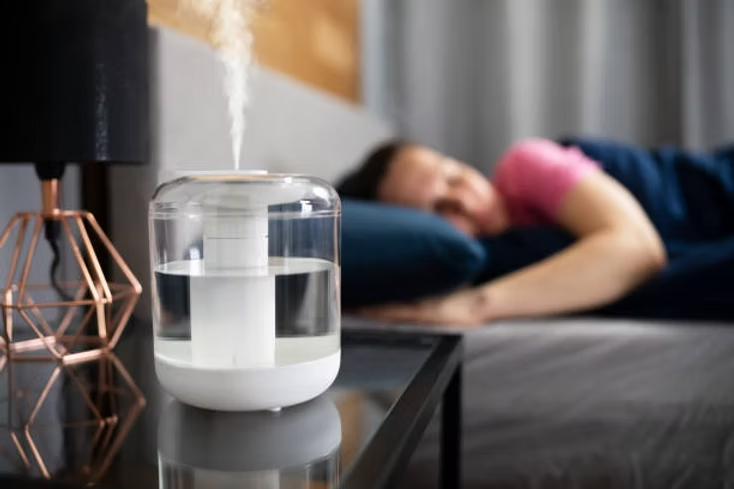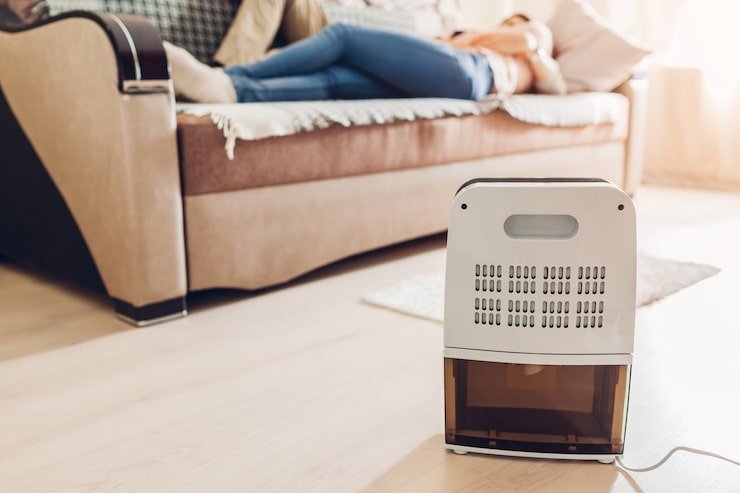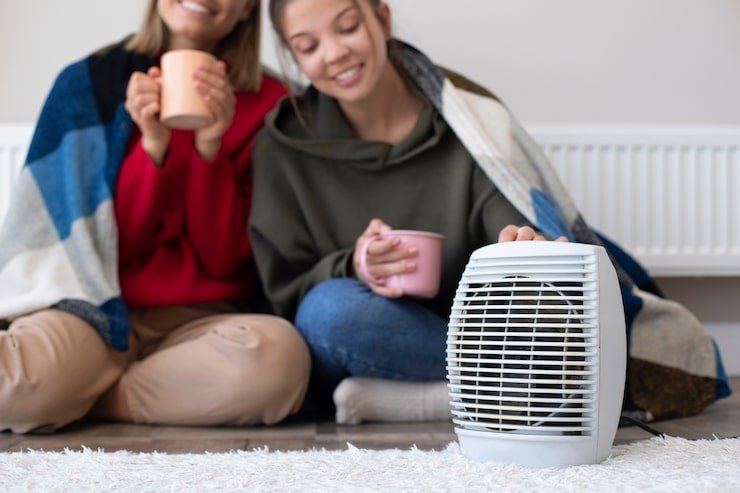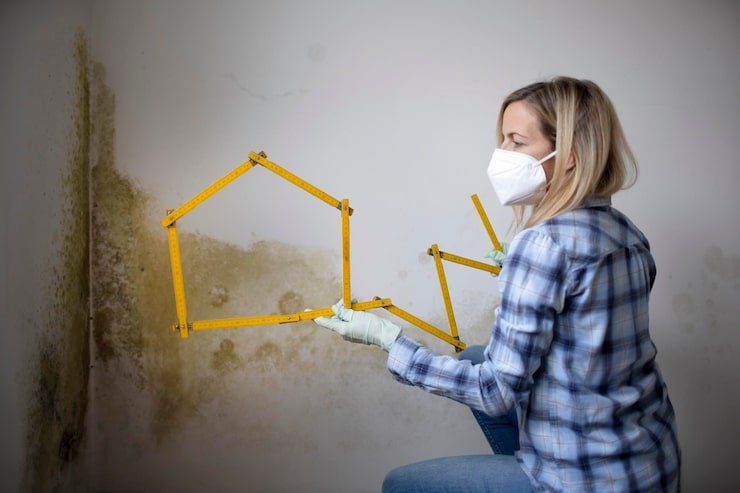Air Quality Testing Explained: What It Is and How It Works
- admin323029
- Blog

Most of us spend over 90% of our time indoors—at home, at work, or in other enclosed spaces. Yet we rarely stop to think about what’s actually in the air we’re breathing. Dust, mold, radon, chemicals, and allergens are just a few of the contaminants that could be quietly affecting your health. That’s why air quality testing is such a critical tool for every homeowner.
In this blog, we’ll break down exactly what air quality testing is, how it works, and why it matters—especially if you live in regions like Massachusetts or New Hampshire, where climate and home age can amplify indoor air concerns. This guide is packed with practical, easy-to-understand advice to help you take control of the air inside your home.
What Is Air Quality Testing?
Air quality testing is a diagnostic process that identifies pollutants, allergens, and toxins in your indoor air. A professional inspector uses specialized equipment to collect air and surface samples throughout your home. These samples are then analyzed—often by certified laboratories—to determine what contaminants are present and at what levels.
Common pollutants include mold spores, volatile organic compounds (VOCs), formaldehyde, carbon monoxide, radon gas, dust, pollen, and pet dander. Many of these can’t be seen or smelled, but they may cause or contribute to a wide range of health issues including allergies, respiratory problems, fatigue, and even long-term illnesses like cancer.
Why Air Quality Testing Matters for Your Health
Poor indoor air quality can cause a variety of symptoms—from headaches and sinus irritation to more serious conditions like asthma or chronic bronchitis. According to the Environmental Protection Agency (EPA), indoor air can be two to five times more polluted than outdoor air. In winter months, when homes in Massachusetts and New Hampshire are tightly sealed, this becomes an even bigger concern.
If you’ve been feeling unwell without a clear reason, air quality testing could uncover the source. It’s especially important for households with children, elderly residents, or anyone with asthma or allergies. Testing helps pinpoint the exact pollutants in your air so you can take steps to eliminate or reduce them.
H2: How Does Air Quality Testing Work?
The air quality testing process generally follows a few key steps:
1. Visual Inspection
A trained professional starts with a walk-through of your home, looking for signs of moisture, poor ventilation, mold, or sources of VOCs. This step helps determine which tests are necessary.
2. Air Sampling
Technicians collect indoor air samples using pumps and filter systems that trap particles. This may include passive or active sampling depending on the pollutants being tested for. Some tests target mold spores, others VOCs or formaldehyde.
3. Surface Sampling (If Needed)
If mold or chemical residue is suspected on walls, ceilings, or furniture, surface samples are also taken. These are analyzed for biological or chemical contaminants.
4. Monitoring Devices
Real-time monitors may be used to check for carbon monoxide, carbon dioxide, or particulate matter (PM2.5 or PM10). These devices provide instant feedback on dangerous gas levels in your environment.
5. Lab Analysis and Reporting
Samples are sent to certified labs for evaluation. You’ll receive a report outlining the presence and concentration of various pollutants, along with professional recommendations.
What Pollutants Does Air Quality Testing Detect?
There are many potential contaminants found in homes, but the most common include:
-
Mold Spores: Often hidden in basements, attics, and around windows.
-
VOCs: Emitted from paint, cleaning products, furniture, and flooring.
-
Radon Gas: A naturally occurring radioactive gas that can accumulate in basements.
-
Carbon Monoxide: Comes from malfunctioning heating systems or gas stoves.
-
Pet Dander and Pollen: Common allergens found in HVAC systems and carpets.
-
Dust Mites: Microscopic insects that thrive in soft furnishings and bedding.
Depending on your location and home condition, your air quality may be affected by one or several of these contaminants. Homes in coastal Massachusetts, for instance, may have higher mold concerns due to humidity. Older homes in New Hampshire often face radon risks from soil gas intrusion.
When Should You Get Air Quality Testing?
Some signs that you may need air quality testing include:
-
Unexplained health issues like frequent headaches or allergies
-
Musty or chemical odors that don’t go away
-
Recent home renovations or new furniture installations
-
Water damage, leaks, or visible mold
-
Living near industrial zones or high-traffic areas
-
Planning to sell or buy a home
Even if you don’t notice anything unusual, testing is a smart preventive step—especially in older homes or those with poor ventilation.
What Happens After Testing?
Once your results are in, you’ll receive a clear breakdown of what was found and what actions to take. If elevated mold or VOC levels are detected, the inspector may recommend remediation, improved ventilation, air purifiers, or changes in cleaning products. In the case of radon or carbon monoxide, mitigation systems or immediate HVAC repairs may be needed.
Remember, air quality testing doesn’t just diagnose—it provides a path forward to healthier indoor living.
Why Choose Local Experts in Massachusetts and New Hampshire?
Air quality concerns are regional. In colder states like Massachusetts and New Hampshire, homes are closed up for long stretches of the year, increasing indoor pollutant buildup. Local inspectors understand these conditions and can offer tailored advice for your specific area—whether you’re in Salem, Concord, Boston, or Melrose.
At Elite Home & Mold Inspections, we combine deep regional knowledge with certified testing expertise to deliver accurate, actionable results.
Conclusion: Invest in the Air You Breathe
You wouldn’t drink unfiltered water—so why breathe untested air? Air quality testing gives you confidence that your home is truly a safe space. With pollutants often invisible and symptoms hard to trace, testing is one of the best ways to protect your family’s long-term health.
If you’re in Massachusetts or New Hampshire and haven’t had your air tested recently, now is the time. The sooner you act, the sooner you can enjoy cleaner, healthier air in your home.
Contact us today to schedule your professional air quality test and take the first step toward safer living.
FAQs About Air Quality Testing
1. What is air quality testing and why is it important?
Air quality testing identifies pollutants in your indoor air, such as mold, radon, and VOCs. It’s crucial for protecting your family’s health and maintaining a safe home environment.
2. How much does air quality testing cost in Massachusetts or New Hampshire?
Costs vary based on the size of your home and the types of tests required. In general, comprehensive air quality testing in this region ranges from $250 to $600.
3. Can I do air quality testing myself?
DIY kits exist, but they are limited in scope. Professional air quality testing provides lab-verified results, expert interpretation, and specific recommendations for improvement.
4. What if my home fails the air quality test?
Failing a test means high levels of certain pollutants were found. Your inspector will recommend steps like ventilation upgrades, remediation, or installation of purification systems.
5. How often should I test my indoor air?
You should consider air quality testing every 2–3 years, or more frequently if you experience symptoms, renovate your home, or live in an area with known environmental concerns.
Are you worried about the cleanliness of your space?
Let us help you! Cleaning services are our specialty, and we offer a complete range of cleaning and maintenance services. Get a free estimate!




